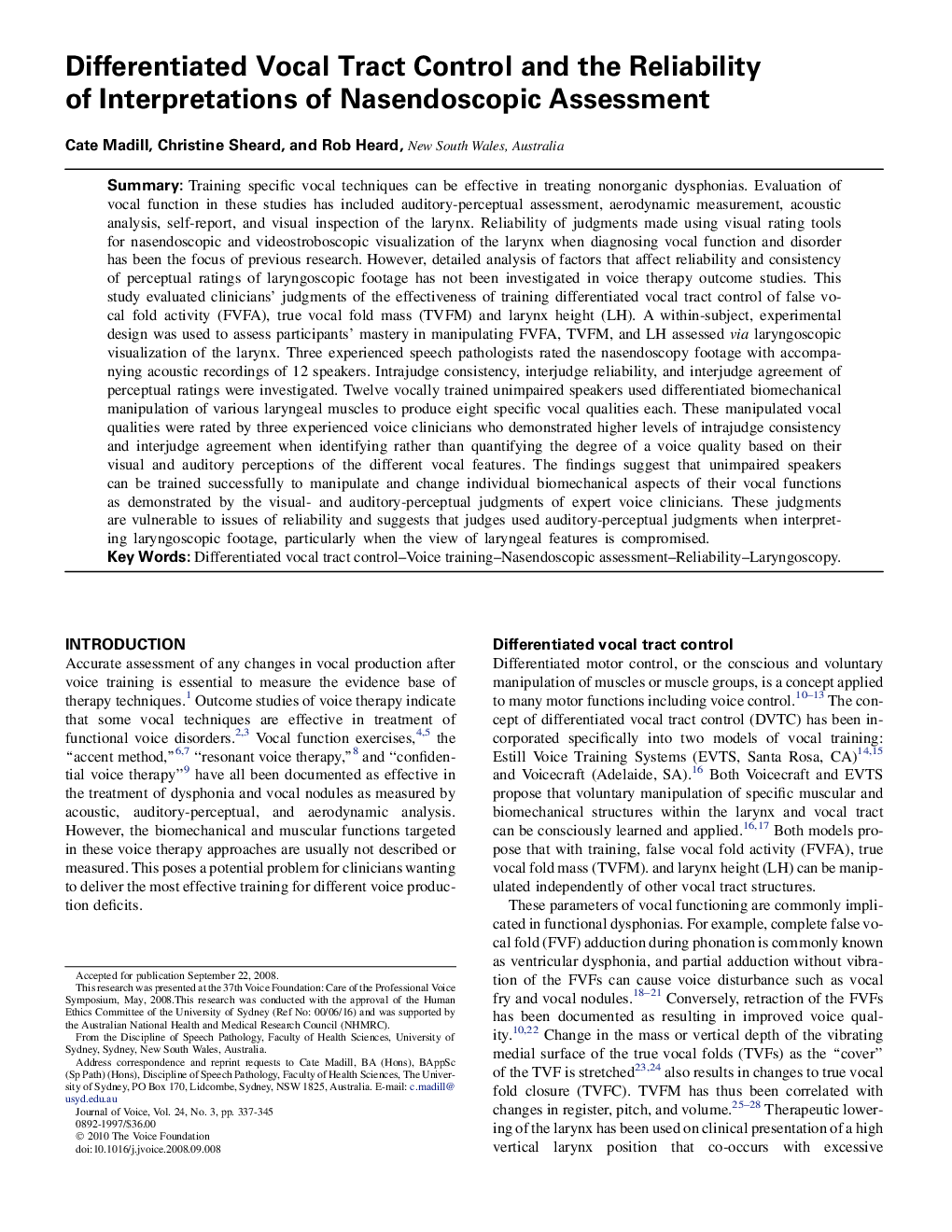| کد مقاله | کد نشریه | سال انتشار | مقاله انگلیسی | نسخه تمام متن |
|---|---|---|---|---|
| 1102303 | 953596 | 2010 | 9 صفحه PDF | دانلود رایگان |

SummaryTraining specific vocal techniques can be effective in treating nonorganic dysphonias. Evaluation of vocal function in these studies has included auditory-perceptual assessment, aerodynamic measurement, acoustic analysis, self-report, and visual inspection of the larynx. Reliability of judgments made using visual rating tools for nasendoscopic and videostroboscopic visualization of the larynx when diagnosing vocal function and disorder has been the focus of previous research. However, detailed analysis of factors that affect reliability and consistency of perceptual ratings of laryngoscopic footage has not been investigated in voice therapy outcome studies. This study evaluated clinicians' judgments of the effectiveness of training differentiated vocal tract control of false vocal fold activity (FVFA), true vocal fold mass (TVFM) and larynx height (LH). A within-subject, experimental design was used to assess participants' mastery in manipulating FVFA, TVFM, and LH assessed via laryngoscopic visualization of the larynx. Three experienced speech pathologists rated the nasendoscopy footage with accompanying acoustic recordings of 12 speakers. Intrajudge consistency, interjudge reliability, and interjudge agreement of perceptual ratings were investigated. Twelve vocally trained unimpaired speakers used differentiated biomechanical manipulation of various laryngeal muscles to produce eight specific vocal qualities each. These manipulated vocal qualities were rated by three experienced voice clinicians who demonstrated higher levels of intrajudge consistency and interjudge agreement when identifying rather than quantifying the degree of a voice quality based on their visual and auditory perceptions of the different vocal features. The findings suggest that unimpaired speakers can be trained successfully to manipulate and change individual biomechanical aspects of their vocal functions as demonstrated by the visual- and auditory-perceptual judgments of expert voice clinicians. These judgments are vulnerable to issues of reliability and suggests that judges used auditory-perceptual judgments when interpreting laryngoscopic footage, particularly when the view of laryngeal features is compromised.
Journal: Journal of Voice - Volume 24, Issue 3, May 2010, Pages 337–345